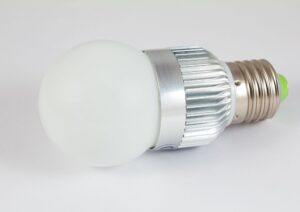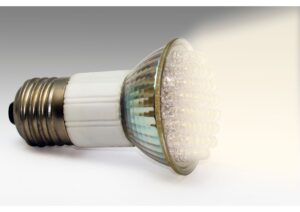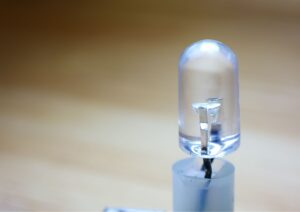The Diodes and the way they Changed the Art of Light
Honestly speaking, the vast majority of people switch on the lights and do not even stop and think what goes on above our heads. However the movement between the burnable lightbulb by Edison and the crazy idea of a diode light bulbs did not occur in a day. The leap is not only altering the way that we illuminate our residences, but the magnitude of energy savings, the comfort of our living places and even the process of sleeping.

Science is one hell of an oddball because it never appears where you want it but then it happens just when you are least expecting it. Every soft white light bulb or color changing LED that brings light into your living room is decades of discoveries, often due to serendipitous successes, sometimes due to hard times in dimly lit labrooms. Slap on your figurative flashlight. We are getting into the land of photons.
Light At Speed Of Science (Filaments to Diodes)
Tungsten filaments represented the extremely small wires which were first used to create light bulbs. Much heat, tons of wasted energy, low life expectancy. And whether you grew up in a household where the Dad would scream, Turn that light bulb off or we will have a high electric bill! you already know that the incandescent bulbs were not doing your wallet any favors.
Along comes the light-emitting diode or LED. Imagine an LED as a size of a drop of a microscopic traffic device. Place two materials between two pieces of material; a positive and negative. Once electricity flows between the two causing the two to switch, the energy is emitted in the form of photons. Boom: promptly seen light, almost no heat wasted.
LEDs sucked up energy and incandescent bulbs guzzled it like college kids at an open bar. By the year 2020 there was an average of 75 percent saved energy by LEDs. Better still; their life span increased, as their life time increased by less than 1,000 hours to more than 25,000 hours. No contest.
Color Me Surprised- The Science of Spectrum
Another twist, diode light bulbs not only energy-saving, but allow us to also paly with the color spectrum. With the classic, yellow-painted bulb all the hues are gently yellow and, let us face the reality one more time, it is not what one would like to see in the morning at the breakfast table or in the workplace.
What is the thing behind the scene? LEDs have materials that can be manipulated in order to emanate various kinds of light. Wish to have a daylight white in your kitchen or a soft warm tone in the evenings? Having a different element or two out of the manufacturing process is as easy as pie.
Recent studies such as a 2023 paper published by the U.S. Department of Energy demonstrate that mood and alertness can be enhanced by lighting whose color temperatures are similar to those of natural daylight. There is a developing product based around complete day tuning of LED light, so called circadian LED lighting, that will promote sleep and productivity.

More Bang for Your Buck The Lumen Game
Never mind watts, which everybody remembers his pap exercising with. These days it is all about lumens. Lumens gauge the amount of actual light that a bulb emits, or in other words how bright the room feels. The diode bulbs make no bones about it and illuminate spaces using much less electricity.
The beauty of it is a 10-watt LED is capable of providing the same amount of light as a 60-watt incandescent. and you won t need the kitchen mitts to replace a burned out bulb either, that little diode hardly heats up. The US Energy Information Administration discovered that by switching the nationwide lighting system to LED, at least 40 percent fewer energy requirements would be made in lighting during the next decade.
Microchips and Smarts-Modern Lights Get Clever
It is one of the ironies of diode light bulbs, but they get along swimmingly with microchips and software. That creates a Pandora box of possibilities. Just like that, your living room lights could change as per your mood, dim down in the sunset or even flash, as your team scores a goal.
The business with the smart bulbs is large. Statista shows that as of 2023, 47 percent of households in the US install at least one smart light. These bulbs are hooked up to mobile applications, voice-activated devices, and movement sensors and automatically make your life more comfortable and reduce your energy spending. Other bulbs such as Philips Hue have introduced the ability to shift the spectrum and take away blue light at night to aid healthier sleep patterns.
Less Is More: Impact on the Environment
There is also a green bonus here. The incandescent bulbs had possessed landfill-they burn out fast and they loaded the garbage cans and even leaked dangerous chemicals. Bulbs made of a diode have a life span of years and are more recyclable. EPA claims that each LED that you put in, prevents about a half of a kilogram of carbon dioxide in the atmosphere, just because of less power usage.
There are now cities that engage in the ambitious programs of the LED streetlights. In an example, Los Angeles alone has swapped more than 210,000 legs of streetlamps to LEDs, a move that saves the City eight million dollars annually, and cuts carbon emission by approximately 48,000 metric tons annually.

Bright Futures about Living
The granddad saying goes that do not put a fix on something that is working! However, lighting certainly was wrecked–wasteful, short-lived, sometimes dangerous. Diode light bulbs were not a little step, they were a leap. Even today, the modern bulbs have provided homes with all the colours between the sunrise and the moonlight, saved power bills, and even increased wellbeing.
The next time you reach out to switch off a light, remember this, although the simple diode is small, it is a giant when it comes to science of lighting. That small beam of light does influence the way we live, work and even dream. Say, that is pretty bright.


